Fred Norman, Head of Audit at Harold Sharp, discusses the role of technology when it comes to getting the most out of your audit.. This article was first published by theBusinessDesk.com on 15 November 2024.
The auditing profession, along with the rest of the business world, is undergoing a significant period of technological change.
The rise of AI and automation, the increasing reliance on IT systems and recognition of cybersecurity risks all play a central role in business operations today. As a result, auditors are focussing more on your business IT environment.
Proactively engaging with your auditors in these tech areas can help streamline the audit, saving you time and resources.
However, using technology poses challenges, so it’s important to work together with your auditors to consider and address any potential issues upfront.
The IT environment
Before investing time in a new audit tool, it is important that your audit team understand your business IT set-up.
Your auditor is already required to document an understanding of how information flows through the business and how IT supports your business model so management should be ready to articulate this clearly.
As management, make sure you understand which systems are directly relevant to the preparation of the financial statements, eg stock or sales systems, as well as the general ledger.
Here are some key questions to consider:
- If you are using off-the-shelf software, what permissions are in place?
- Can anyone edit the underlying source code or make direct changes to data?
- What level of configuration is available for the standard system reports?
- Are there any other systems that automatically post transactions through an interface?
These insights help assess IT-related risks, which affect how much time the audit will require and how efficiently digital audit tools can be used.
For instance, while an automated tool might speed up some tasks, extra work could still be needed to validate reports, balancing out the time saved.
It can be beneficial to perform test runs of any audit tools in advance of the year-end when staff may have more availability.
Without a test run, you could end up wasting valuable time during the year-end audit period attempting to implement a new tech solution without ensuring that the underlying IT environment supports its use.
During your audit planning discussion, ask about changes to the audit approach, so both your team and the audit team have time to prepare or test the new process.
Analytical tools
Regardless of the size of your business, the sheer volume of data now available can be both a challenge and an asset during an audit.
Analytical tools allow auditors to work through this data to build a more comprehensive risk assessment and a deeper understanding of your business. While the initial implementation usually requires additional work from both sides, these tools are designed to operate iteratively with limited additional effort.
Since it can be difficult to perform analysis on data in-house, you might consider engaging with your audit team to provide helpful insights, like visualisations of revenue transactions, to get more value from your audit.
The audit risk assessment process also benefits from your input and should align with your own internal risk assessments.
As such, discussing the outcome of these exercises with your auditors can help identify potential risks and vulnerabilities which your business can take forward as part of its internal risk management process.
Automated sampling and testing
Advances in AI and image recognition software mean that digital tools which can extract relevant information from electronic documents, such as leases or invoices, are becoming more prevalent.
This has clear efficiencies for the audit process as it speeds up data entry tasks and allows this time to be refocused on performing follow up enquiries or more complex areas of audit work.
These tools work best in businesses which already make use of one of the electronic document management systems available and so have relatively quick access to PDF versions of requested documents.
If you have a consistent invoice template or a significant number of leases or other key contracts, consider engaging with your audit team early in the audit process to understand and calibrate these tools.
This can help to reduce the sampling burden on both your team and the auditors.
As technology becomes more accessible and affordable, smaller audit firms and businesses are reaping the rewards of digital innovation, creating a more level playing field.
These advancements mean that all audit teams – not just the largest players – can leverage powerful tools that enhance efficiency and provide deeper insights.
For businesses, this opens up the possibility of working with a mid-tier firm that offers the same technology-driven benefits as the larger firms, but with a more client-focused, collaborative approach.
At Harold Sharp, our Audit Team has extensive experience of collaborating with OMBs throughout the audit process and going beyond compliance to utilise the audit as a tool to better your business.
To find out how we can support you, contact Fred Norman or call 0161 905 1616.

